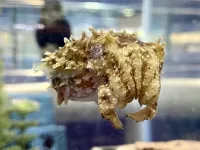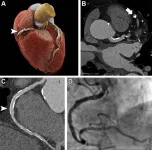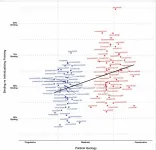(Press-News.org) COLUMBUS, Ohio – Charles Schulz, creator of the comic strip “Peanuts,” was anything but a hippie.
Still, he named the beloved yellow bird character in “Peanuts” Woodstock after the famous counterculture music festival that was attended and celebrated by the younger generation who grew up in the 1960s and ’70s, including many who saw themselves as hippies.
The question is why, says Michelle Ann Abate, author of the new book Blockheads, Beagles, and Sweet Babboos: New Perspectives on Charles M. Schulz’s Peanuts.
Based on her critical analysis of the strips featuring Woodstock, Abate said she believes the character can be seen to represent the young people of the time in a positive and affirming way.
The way Woodstock was portrayed suggests Schulz didn’t share the sentiments of many others of his generation, who often criticized and sometimes reviled the Woodstock generation, said Abate, who is a professor of literature for children and young adults at The Ohio State University’s College of Education and Human Ecology.
“Charles Schulz saw the young people of the time in a different light than many other people of his generation,” she said.
“I believe you can view the character Woodstock as his critique of how young people were judged by adults of the time.”
Although the little yellow bird had appeared in “Peanuts” since the 1960s, Woodstock was first given the name in a June 22, 1970, strip. While Schulz acknowledged that he named his character after the music festival, he was cryptic about his reasoning behind the name, Abate said.
But Abate believes there is little doubt that he was meant to represent the young adults of the time. In fact, Snoopy even called Woodstock “a bird hippie” in several strips, she noted.
And it was telling how Schulz depicted this “bird hippie.”
“Of all the characters in ‘Peanuts,’ Woodstock is arguably the kindest, sweetest and most unassuming,” Abate writes in the book.
The character Woodstock is not portrayed in the way many adults viewed the young people who attended the music festival.
“The little bird is presented as innocently childlike, not immaturely childish,” Abate wrote. “Both in his relationship with Snoopy and his interactions with other characters, Woodstock is good, kind, gentle, sweet and caring.”
Another clue that Woodstock may represent the younger generation of the time was how he communicated in the strip. His speech was shown as “chicken scratch” in the strip, and the only character who could understand him was Snoopy.
Abate noted that older generations often complain that they can’t understand younger people and talk about how they “speak a different language.” That’s literally true of Woodstock in “Peanuts.” It’s telling that Snoopy was the one who could understand him, given that he calls himself “groovy” in the strip, she said.
“Snoopy is a very sympathetic character in ‘Peanuts’ and is able to blur the lines between animals and humans, between different generations and different mindsets,” she said.
The connection between Snoopy and Woodstock was apparent even before Woodstock was given the name.
In 1964, Schulz published a sequence of strips where the little yellow bird and his feathered friends engaged in a series of demonstrations. What the birds are protesting is not made known – their signs simply show punctuation marks or symbols. But after two full weeks of weekday strips, Snoopy declares that he always supports the “underbird.”
Schulz had a soft spot for the underdogs and their struggles, including young people, Abate said.
When “Peanuts” first started in 1950, it was about the struggle of young people growing up during that time, which was very different from the issues faced by those growing up in the 1960s and ’70s.
Abate said Charlie Brown and his peers might be called the “dour children,” while the Woodstock Generation were often called “flower children.”
“In the ’50s, Schulz was presenting kids as being depressed, being anxious, being philosophical, being anything but carefree and innocent,” Abate said.
“Initially, it was radical to suggest that young people weren’t all cute and innocent. And then by the ’70s it became radical to say they were.”
But in both cases, “Peanuts” challenges mainstream beliefs about youth and youth culture, she said. Woodstock played a big role in that after he was introduced.
“In the same way that the hippie movement was short-lived but enjoyed a long legacy, Schulz’s bird was physically small but had a big thematic impact … He changed one of the core messages in ‘Peanuts’,” Abate wrote.
Abate doesn’t offer a new view of just Woodstock in Blockheads, Beagles, and Sweet Babboos. She devotes chapters to other major and minor characters, including Charlie Brown, Snoopy and Lucy, reconsidering them in new lights.
Even though the last original “Peanuts” strip was published in 2000, the impact of the work has lived on. “Peanuts”-related shows continue to air on television and fans still buy a wide variety of “Peanuts” merchandise.
“‘Peanuts’ has really kept a foothold in popular culture, even 20 years or so after Schulz’s death,” Abate said.
“And more than that, it still is relevant. It is hard to imagine there is a cartoonist working today who has not been influenced in some way by Schulz and his work.”
END
The meaning behind the Woodstock character in ‘Peanuts’
Schulz showed empathy for younger generation, author says
2023-06-20
ELSE PRESS RELEASES FROM THIS DATE:
Restoring the blood-brain barrier?
2023-06-20
There's a bouncer in everyone: The blood-brain barrier, a layer of cells between blood vessels and the rest of the brain, kicks out toxins, pathogens and other undesirables that can sabotage the brain's precious gray matter.
When the bouncer is off its guard and a rowdy element gains entry, a variety of conditions can crop up. Barrier-invading cancer cells can develop into tumors, and multiple sclerosis can occur when too many white blood cells slip pass the barrier, leading to an autoimmune attack on the protective layer of brain nerves, hindering their communication with the rest of the body.
"A leaky blood-brain barrier is a common ...
Combining cancer-targeting virus therapy with radiation to fight brain cancer works better than either treatment on its own: study
2023-06-20
EDMONTON — Combining a cancer-targeting virus with radiation to treat brain cancer in mice was more effective than either therapy on its own according to University of Alberta research, providing hope for new treatments that combine immunotherapy with traditional surgery, chemotherapy or radiation.
The researchers treated mice with glioblastoma brain tumours simultaneously with high-dose radiation and a genetically engineered oncolytic vaccinia virus, a virus that has been used safely as a vaccine against smallpox.
The ...
Exploring the deep connections between adolescent sleep and overall health
2023-06-20
As director of SRI’s Human Sleep Research Program, Fiona Baker studies the complex interplay between sleep and overall health and well-being.
Much of her work has been focused on sleep patterns in adult women, but recently her attention has turned to adolescents. Adolescence is a crucial time for developing healthy sleep patterns as it is for brain development. In her research, Baker draws clear lines of connection between the two.
“Sleep is so important to us all, but especially for teenagers or adolescents,” Baker says. “Between the ages of 10 and 21, or so, and even a little later, the ...
SRI seeks to learn how insects speak through smells
2023-06-20
All around us, insects are speaking to each other: jockeying for mates, searching for food, and trying to avoid becoming someone else’s next meal. Some of this communication is easy to spot—like the flashes of fireflies on a summer night or a screaming chorus of cicadas in the afternoon—but many of the most sophisticated conversations are challenging to observe, occurring through an exchange of chemical scents.
Understanding chemical communication could be the key to finding new, more effective ways to protect crops or ward off biting insects that can transmit diseases. Researchers ...
Cuttlefish brain atlas first of its kind
2023-06-20
NEW YORK, NY — Anything with three hearts, blue blood and skin that can change colors like a display in Times Square is likely to turn heads. Meet Sepia bandensis, known more descriptively as the camouflaging dwarf cuttlefish. Over the past three years, a team led by neuroscientists at Columbia’s Zuckerman that includes data experts and web designers has put together a brain atlas of this captivating cephalopod: a neuroanatomical roadmap depicting for the first time the brain’s overall 32-lobed structure as well its cellular organization.
The ...
Climate action plans mobilize limited urban change, researchers report
2023-06-20
The Intergovernmental Panel on Climate Change Fifth Assessment Report (AR5), released just prior to an international climate convention in 2015, explicitly stated that human-caused greenhouse gas emissions were the highest in history, with clear and widespread impacts on the climate system. Since then, hundreds of cities across the world have published their own climate action plans (CAPs), detailing how their urban areas will handle climate change. How do the plans stack up against one another and against the recommended ...
Photon-counting CT noninvasively detects heart disease in high-risk patients
2023-06-20
OAK BROOK, Ill. – New ultra-high-resolution CT technology enables excellent image quality and accurate diagnosis of coronary artery disease in high-risk patients, a potentially significant benefit for people previously ineligible for noninvasive screening, according to a study published in Radiology, a journal of the Radiological Society of North America (RSNA).
Coronary artery disease is the most common form of heart disease. Coronary CT angiography (CCTA) is highly effective for ruling out coronary artery disease ...
Self-driving revolution hampered by a lack of accurate simulations of human behavior
2023-06-20
Self-driving revolution hampered by a lack of accurate simulations of human behaviour
Algorithms that accurately reflect the behaviour of road users - vital for the safe roll out of driverless vehicles - are still not available, warn scientists.
They say there is “formidable complexity” in developing software that can predict the way people behave and interact on the roads, be they pedestrians, motorists or bike riders.
To improve the modelling, a research team led by Professor Gustav Markkula from the Institute of Transport Studies ...
Toxic emissions from wildland-urban interface fires
2023-06-20
Fires in the wildland-urban interface (WUI) emit more toxic smoke than wildfires burning in natural vegetation, due to the chemicals in the structures, vehicles, and other manufactured goods that burn in fires in areas of human habitation. Amara Holder and colleagues surveyed the literature on emissions from urban fuels, finding 28 experimental studies that reported emission factors—emissions per unit of fuel burned—for various items, such as home furnishings, consumer electronics, and vehicle ...
Electing progressives with patriotism, family, and tradition
2023-06-20
Economically progressive candidates may fare better in US elections when delivering their message in terms of “binding values” such as patriotism, family, and respect for tradition, according to a study. Although large majorities of Americans favor increasing economic equality in the United States, candidates who promote policies intended to reduce economic inequality, such as raising the minimum wage or increasing access to health care, often fare poorly at the ballot box. One reason for their under-performance may ...
LAST 30 PRESS RELEASES:
Numbers in our sights affect how we perceive space
SIMJ announces global collaborative book project in commemoration of its 75th anniversary
Air pollution exposure and birth weight
Obstructive sleep apnea risk and mental health conditions among older adults
How talking slows eye movements behind the wheel
The Ceramic Society of Japan’s Oxoate Ceramics Research Association launches new international book project
Heart-brain connection: international study reveals the role of the vagus nerve in keeping the heart young
Researchers identify Rb1 as a predictive biomarker for a new therapeutic strategy in some breast cancers
Survey reveals ethical gaps slowing AI adoption in pediatric surgery
Stimulant ADHD medications work differently than thought
AI overestimates how smart people are, according to HSE economists
HSE researchers create genome-wide map of quadruplexes
Scientists boost cell "powerhouses" to burn more calories
Automatic label checking: The missing step in making reliable medical AI
Low daily alcohol intake linked to 50% heightened mouth cancer risk in India
American Meteorological Society announces Rick Spinrad as 2026 President-Elect
Biomass-based carbon capture spotlighted in newly released global climate webinar recording
Illuminating invisible nano pollutants: advanced bioimaging tracks the full journey of emerging nanoscale contaminants in living systems
How does age affect recovery from spinal cord injury?
Novel AI tool offers prognosis for patients with head and neck cancer
Fathers’ microplastic exposure tied to their children’s metabolic problems
Research validates laboratory model for studying high-grade serous ovarian cancer
SIR 2026 delivers transformative breakthroughs in minimally invasive medicine to improve patient care
Stem Cell Reports most downloaded papers of 2025 highlight the breadth and impact of stem cell research
Oxford-led study estimates NHS spends around 3% of its primary and secondary care budget on the health impacts of heat and cold in England
A researcher’s long quest leads to a smart composite breakthrough
Urban wild bees act as “microbial sensors” of city health.
New study finds where you live affects recovery after a hip fracture
Forecasting the impact of fully automated vehicle adoption on US road traffic injuries
Alcohol-related hospitalizations from 2016 to 2022
[Press-News.org] The meaning behind the Woodstock character in ‘Peanuts’Schulz showed empathy for younger generation, author says




